Touring in Canada and Mexico: Buyer's Guide And Advice

The great thing about being a motorcycle rider in this part of the globe is that you can do and see plenty on two wheels within the confines of the contiguous 48. However, if you want to expand your borders a little (literally), the options for moto-exploration become even greater should you decide to travel either north or south. Of course, I’m talking about touring to Canada or Mexico. While there are plenty of great roads, paved or otherwise, in both countries, this particular piece is aimed more towards the rider who has never embarked on a trip across these international borders. Here are a few tips on what you need to know, helpful advice, and suggestions to make your ride just a little more enjoyable.
Don’t Forget Your Passport
Sometimes we take for granted the fact that our northern and southern neighbors are technically foreign countries. As such, you’ll need to take your passport with you should your moto travels lead you in either direction. It’s also a good practice to keep it close to you at all times, as you never know when you may need it. Worse yet, having your passport lost or stolen while in a foreign country can lead to some major headaches once you try to return home. Lastly, make sure your passport has more than six months on it, at minimum, before its expiration date.
Canada Coffee, Eh?
Vehicle Insurance
If you’re traveling to Canada or Mexico on your own bike, double (even triple) check your U.S. motorcycle insurance and be sure to understand what’s covered and what’s not. There’s a possibility your standard American insurance policy won’t cover you in another country, even if it’s still part of North America. In Mexico, you face possible incarceration should you cause an accident and have insufficient or non-existent insurance. Luckily, there are plenty of online insurance brokers available that can provide coverage in Mexico.
Vehicle Permits
Mexico is a beautiful country. One especially worth seeing via two wheels. However, should your travels take you further than 16 miles beyond the Mexican border, or outside the Baja California peninsula, you are required to obtain a temporary importation vehicle permit. Word to the wise, last-minute planners, that if you’re thinking about making this trip, get the required paperwork in your hands long before they’re needed. More information on acquiring the temporary importation vehicle permit can be found at the BajaBound website.
Signals Can Mean Something Else
In the States, you’re likely accustomed to flashing your indicators when you intend on changing lanes or directions to alert traffic behind you. This isn’t a universal signal across the globe, though. In certain areas in rural Mexico, for instance, flashing your left turn indicator on a two-lane road means you’re moving to the right and giving the vehicles behind you permission to pass you on the left. Being on two wheels, there are very few reasons why you’d want to let the four-wheel traffic move in front of you, so be wise to the indicators.
Some Simple Metric Conversions
Canada and Mexico, like almost all other countries on Earth abide by the metric system when referring to units of measurement. This means speed is measured in kilometers per hour instead of miles per hour. As an American, it’s very possible you may have no idea what the speed limit signs translate to in mph, and even less of an idea how to change your digital speedo to kph (if you can). Here’s a relatively simple conversion chart for some of the more common speeds you’ll see:
- 50 kph = 30 mph
- 90 kph = 55 mph
- 100 kph – 62.5 mph
Canadian/American Alliance
Our own E-i-C, Kevin Duke, hails from Canada, having spent his formative years in the Canadian plains, and he chimes in with a few simple things to remember. “Canada may be a foreign country, but it’s not that foreign. You can even use your AAA membership there! Be warned that there is a national helmet law, unlike the U.S., so don’t try and ride without one.”
Can You Hear Me Now?
Dolla Bill, Y’all
Another thing to consider when traveling to Canada or Mexico (or any foreign country for that matter) is exchanging your currency. Credit cards without foreign transaction fees is one way to go, but not every establishment will accept plastic (especially not when you’re in the middle of the Mexican desert), and you might also get ripped off with a lousy exchange rate. The best exchange rate usually comes when taking money from an ATM. If you’ll be traveling into remote areas, far from civilization, then the trick here is to carry as much as you need, but also as much as you feel comfortable having on you. Otherwise, carry enough to get you by for a few days before getting more from the ATM.
A few things to remember: be sure to tell your home bank you’re traveling so your card doesn’t get a hold for suspicious activity. Check with your bank in the U.S. to see if they have a sister or affiliate bank in another country. Many times you won’t be charged a bank foreign transaction fee for using ATMs from these establishments. If you can’t find a sister bank, or none are available where you’re traveling, the fees are still typically less than those at currency exchange bureaus.
Make A Plan And Share It
Don’t Like Camping? No Problem
This tip comes courtesy of Isle of Man TT contributor Andrew Capone, who shares this savvy tip for those who prefer a comfy bed and warm shower over a dirt campground: “I recommend downloading one or two of the last-minute hotel apps. Except for the major waypoints on the trip where you might want to lock and load in advance, it’s now much more efficient to book as close as possible… and, it enables you to take detours, unplanned stops and travel as the spirits move you. You can book five minutes from your first cocktail at the hotel bar. Plus, you’d be surprised at some of the 4-star digs that show up under $100. Hotel Tonight posts their deals at noon every day, and will ping you based on location. Hipmunk is good. Orbitz is loaded with last-minute hotels, even in major cities. I booked sub-$125 rooms in NYC three times last year due to snowstorms.”
Let Someone Else Do All The Hard Work
Instead of fretting over all the details above, why not have someone else worry about that stuff? If all you really want to do is ride in either Canada or Mexico (or both!), give a motorcycle touring company a try. Any reputable organization has already pre-ridden the route, taken care of the paperwork, and prepped just the right bike to take you wherever the Canadian or Mexican roads will lead you. Edelweiss Bike Travel is one of the most reputable motorcycle touring companies in the world, with two tours in Canada (check them out here and here), as well as tours that incorporate Mexico en route to other fantastic destinations. Eagle Rider offers a Canadian Rockies tour, and MotoQuest has tours that start as far south as Long Beach, California, heading north through Canada and into Alaska. The company also travels south to Mexico, too. For travelers wishing to ride in Mexico, MotoDiscovery has six tours that will take you throughout the country, including sites like Baja, La Ruta and San Miguel de Allende. RideTheSierra also offers moto tours through Mexico, and if you’re looking for an adventure with more dirt than paved roads, Chris Haines Motorcycle Adventure Company is where you want to go. Haines even offers a turn-key package to race the famous Baja 500 or 1000.

Troy's been riding motorcycles and writing about them since 2006, getting his start at Rider Magazine. From there, he moved to Sport Rider Magazine before finally landing at Motorcycle.com in 2011. A lifelong gearhead who didn't fully immerse himself in motorcycles until his teenage years, Troy's interests have always been in technology, performance, and going fast. Naturally, racing was the perfect avenue to combine all three. Troy has been racing nearly as long as he's been riding and has competed at the AMA national level. He's also won multiple club races throughout the country, culminating in a Utah Sport Bike Association championship in 2011. He has been invited as a guest instructor for the Yamaha Champions Riding School, and when he's not out riding, he's either wrenching on bikes or watching MotoGP.
More by Troy Siahaan



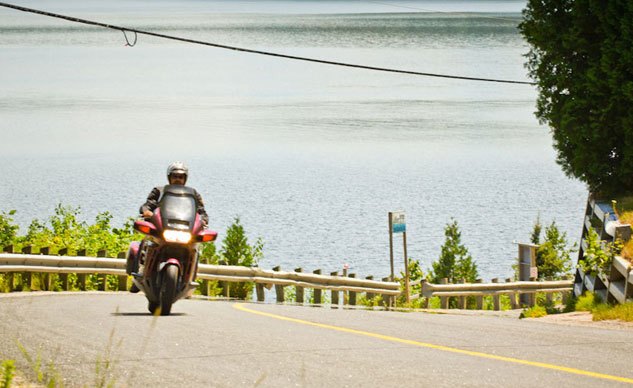

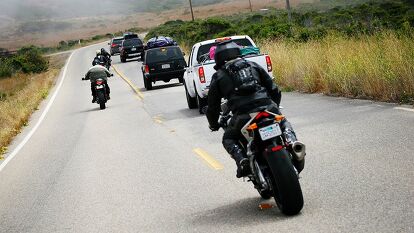































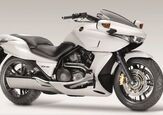


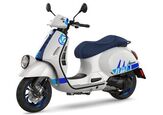
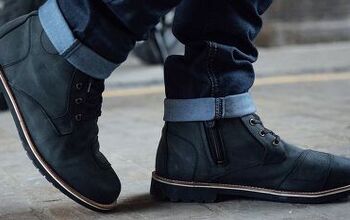





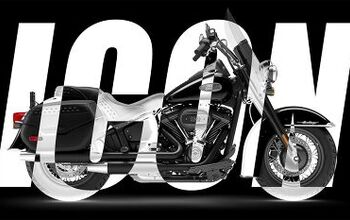
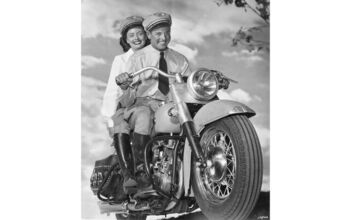
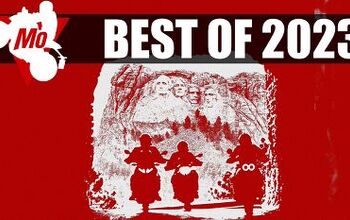




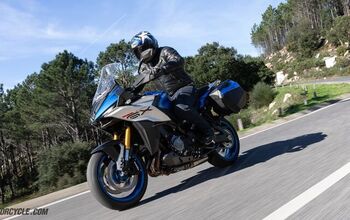


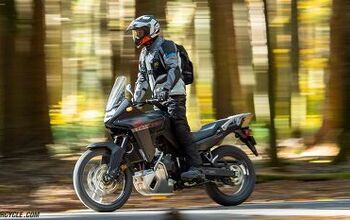

Comments
Join the conversation
Please remember to leave your sidearms at home. Canada has strict rules about ownership and use of handguns which differ drastically from those in a lot of places in the USA. For your own safety, please declare anything which could potentially be regarded as a weapon...bear spray, folding knives etc. You likely won't have any trouble with these, but not declaring them at the border is a SERIOUS offence here in Canada. Besides, you won't need them in this country.
I ride to baja frequently, all the information on the article is on point, about mexican insurance you can buy it at the border but is more expensive than the online agencies. Sometimes I get to the border on a Sunday or too late to buy i locally, that is why I prefer to buy my mexican insurance online. I also found out that is always cheaper online, the site I always use is www.busycactus.com